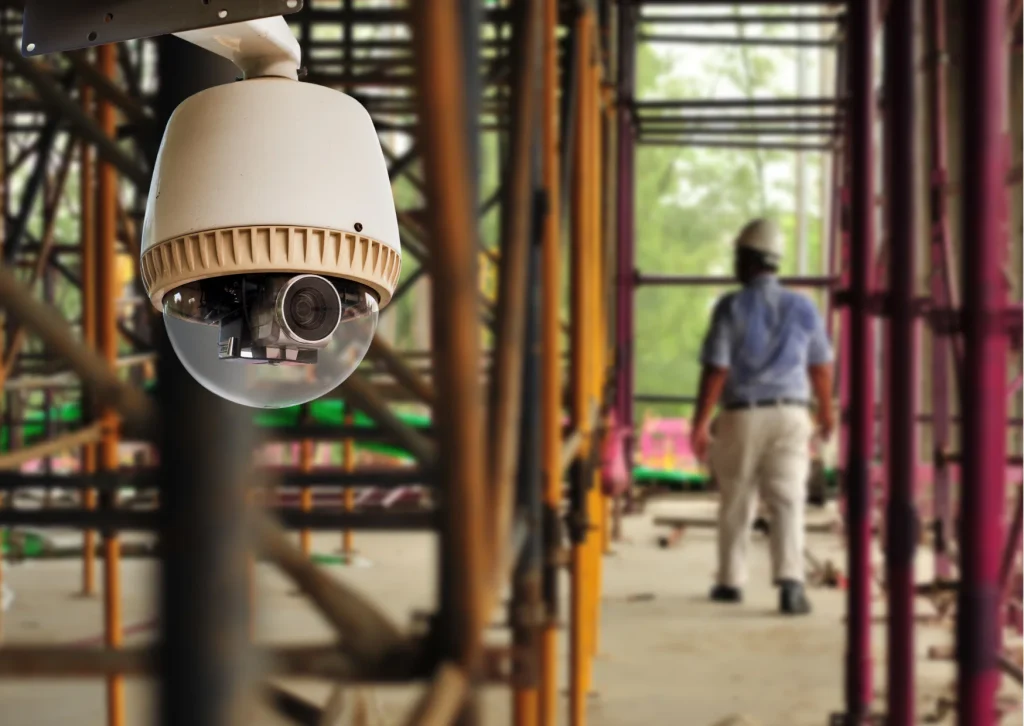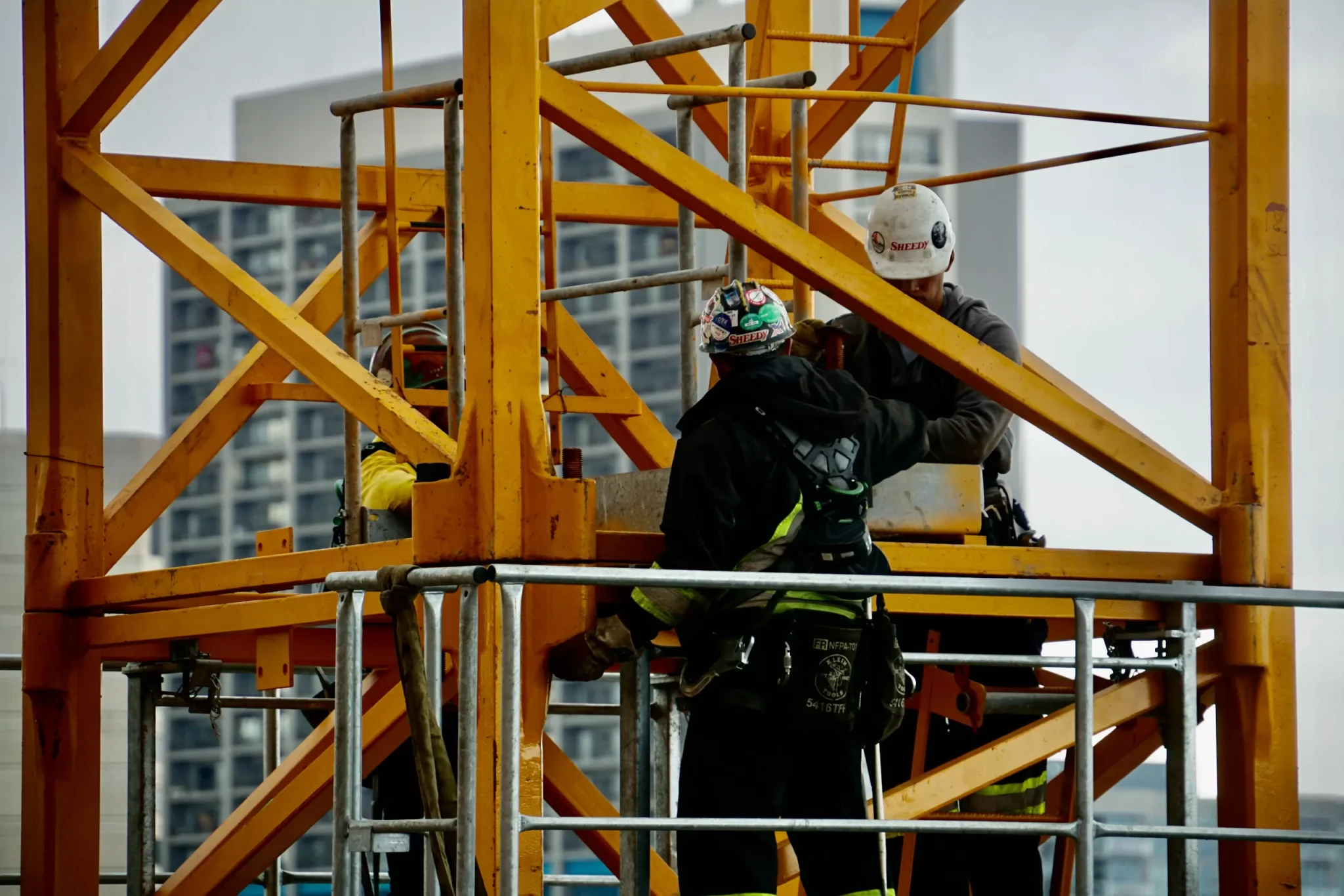
Workplace accidents are prevalent anywhere, and they can happen at any time. Hazards are present in every workplace, especially in high-risk environments such as construction sites. According to the third quarter of 2021 National statistics, construction, manufacturing, and transportation are the key industries with the highest fatalities and injury rates. The Workplace Safety and Health (WSH) Council continuously reminds all employers to give importance to workplace safety and health (WSH).
With the rise of Artificial Intelligence (AI), Machine Learning (ML), and Internet-of-Things (IoT), several technological advancements have been made, such as; AI-enabled cameras, sensors, AI-wearables, and Building Information Modeling (BIM) used to deter workplace accidents. We see these improvements made in technology to assist for various purposes such as construction site safety. Let’s take a closer look at how an AI-enabled video analytics software can detect and prevent common workplace accidents.
1. Slips, Trips and Falls
According to the quarterly report, the top cause for most injuries is Slips, Trips, and Falls (STF). More than one in three major injuries this quarter alone deals with STF concerns.
STF can cause injuries like sprains, strains, broken bones due to impact from the fall. It can also result in cuts if the accident happens near sharp objects. Some even experience burns if the mishap occurs at a hot zone or near a hot surface. In more severe cases, the slip can cause death. WSH lists down recommendations to prevent STF from happening. Employers can also refer to the checklist for a more detailed approach.
Another method to minimize slips, trips, and falls is installing cameras at the construction site to detect safety breaches. The cameras can also see sudden or unique movements such as slipping, tripping, and falling. Most importantly, it can potentially capture the cause of slips, trips, and falls. For instance, a person may fall off the edge while working at heights due to the absence of a barrier. A person may also slip due to water spills. Video analytics can account for these safety hazards, e.g., lack of guardrails and presence of stagnant water.
2. Falling from Heights
Another major cause of workplace accidents is falling from heights, especially in the construction industry. According to an HSE 2020-2021 report, falling from heights was the primary type of fatal accident for workers in the UK. This number is similar to other parts of the world. According to a 2018-2019 report, the main leading cause of occupational death was falling from heights. It is no surprise that fall protection is one of OSHA’s most-cited safety standards in 2017.
According to a USA Today article, falls from a distance greater than 30 feet have a high chance of inflicting severe injuries to the spleen, liver, and lungs, with blunt chest trauma and rib fractures. It also cites that 50% of patients who fall four stories will die. The chance of death increases to 90% when the fall is seven stories high.
Every construction site needs a fall prevention plan. Adding AI-enabled cameras can assure workers of a safe working environment. Cameras installed on the construction site can identify any open areas, gaps, or lack of barriers so that workers can avoid the danger of falling off the edge. Another benefit of a smart CCTV onsite is detecting if workers wear the correct PPE and harness. A harness is a form of PPE specific for working at heights. If ill-fitted or misused, it presents a danger to the workers.
3. Machinery Incidents
Workplace accidents due to dangerous machinery remain one of the top three causes of workplace injuries, causing severe consequences such as crushed limbs and amputations. There are several ways to cautiously operate heavy machinery and equipment in a construction site to reduce workplace accidents.
Placing cameras can ensure workers’ safety. For instance, once it detects that workers are standing or working within an impact zone, they can be alerted immediately to vacate or move to a safer area. The video analytics software can also generate reports of the safety violations that safety officers can review and update protocols accordingly.
4. Vehicular Accidents
According to a local article and statistical reports, vehicular accidents rose as the top cause of local workplace deaths in the first half of 2021. Twenty-three (23) workers died on the job between January and June 2021, with 6 of the workers in accidents involving vehicles. A team was created to tackle these concerns to reduce the number of deaths in hazardous environments, e.g., construction, manufacturing, and supply chain. Employers are to comply with the WSH’s policies at all times. Safety officers can observe relevant industry standards and refer to the WSH Approved Code of Practice list.
Current measures include implementing a workplace traffic management plan to manage vehicles’ movement safely. Aside from regularly checking on markings on the ground, routine inspections, and reporting faulty vehicles, workers must also undergo training. Vehicle drivers should also be competent to operate certain vehicles, e.g., WSQ to “Operate Forklift” course.
Several WSH bulletin memos recommend using technology for vehicle management. For instance, to alert operators when people are close to the vehicle and adopt the reverse alert system, collision sensors, and blind-spot cameras. The webinar on vehicular safety also highlights how technology can keep workers safe in the logistics and transport industry. They suggested adopting technologies such as Advanced Driver Assistance System and Driver Status Monitoring System.
Coupling current measures with video analytics will change current manual processes to a more automated system. Video analytics can assist safety officers in vehicle management, e.g., plate number registration and recording a vehicle’s type and speed.
5. Personal Protective Equipment (PPE) Non-compliance
Another benefit of implementing video analytics is spotting if a worker is wearing the right PPE gear or lack thereof. One of the most basic requirements for all workers across all high-risk industries is to wear personal protective equipment, also known as PPE. PPE is a protective gear that includes helmets, hard hats, vests, gloves, etc. It helps to protect any workers from potential dangers present at work. It also protects oneself from common workplace accidents; slips, trips & falls, falls from height, machinery incidents, and vehicular accidents.
Enforcing health and safety standards appropriately in a workplace helps to lower accident rates and saves lives. We also learn that developing and fostering a positive workplace safety culture accounts for common workplace accidents and improves safety across all levels and within the company. These safety efforts ensure that all employees and workers feel assured working in a conducive environment.
Lastly, adopting AI technology improves construction site safety. Take, for instance, our SAFEKEY platform that uses computer vision to detect real-time safety breaches. Introducing AI also reduces human error as manual checks become an automated process. Predictive analysis also helps prevent future repeat accidents. For more information on how SAFEKEY can save lives in the workplace, follow us on our website and LinkedIn.




1 Comment
[…] barriers and guardrails at the workplace can significantly reduce the number of accidents and fatalities, especially at high-risk environments, e.g., construction sites and working at […]